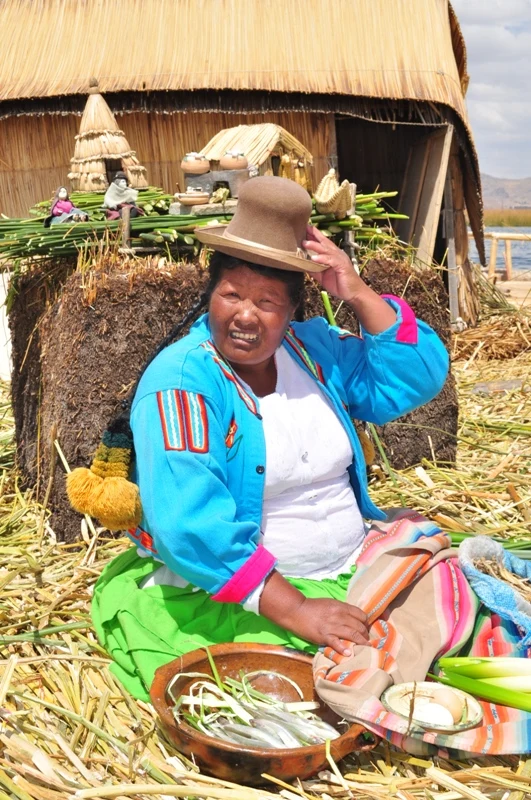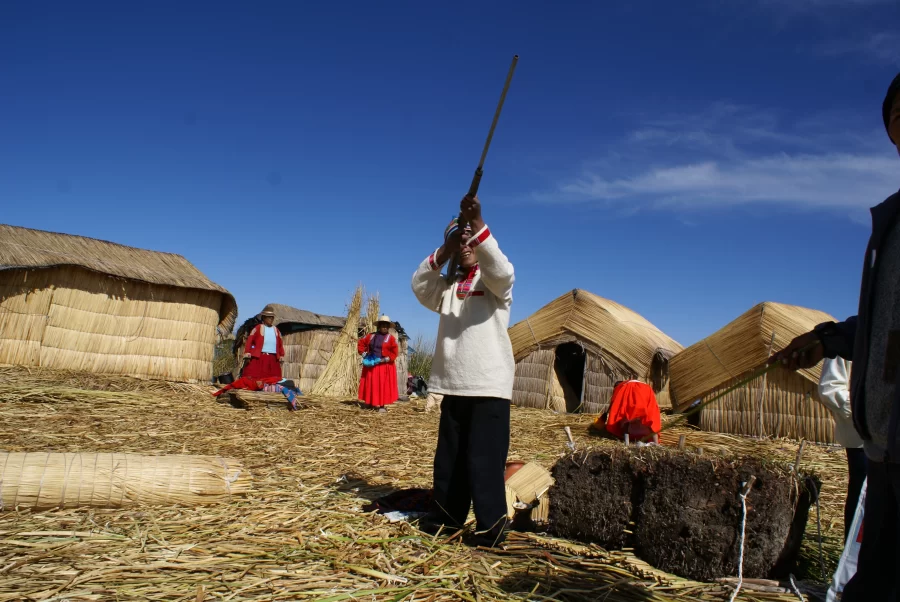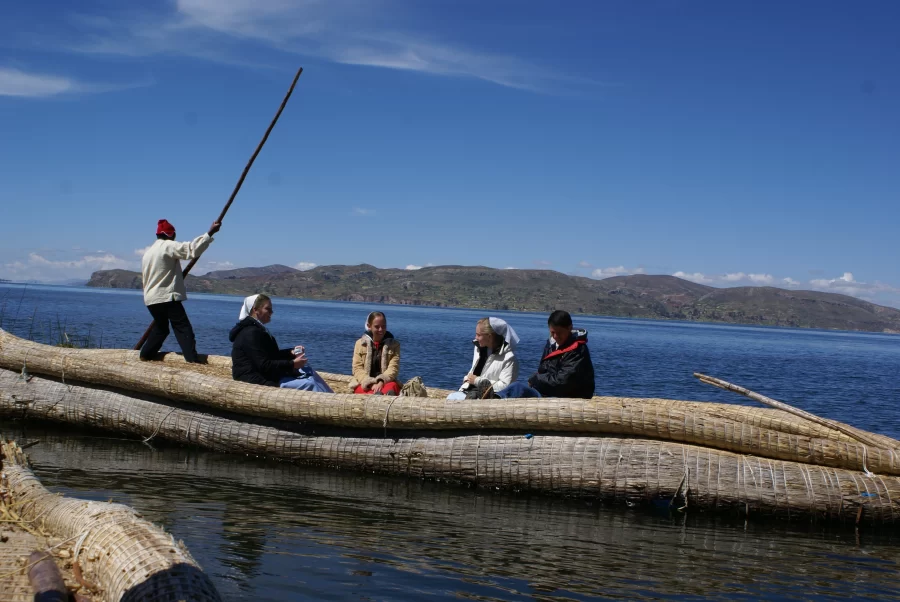
The inhabitants of Lake Titicaca live in their different houses made of totora reeds on the surface of the lake and share with tourists their customs, gastronomy, lifestyle and their mysterious history.
Table of Contents
The inhabitants of the Uros have inhabited these islands for a long time, the basis of their subsistence is hunting, fishing and in some cases they usually commercialize it in the market of Puno or they make a barter. The floating islands that are located in the Uros are artificial and in them live about five or six families.
Likewise, they sell their handicrafts made of totora reeds or their colorful weavings, which attract the attention of tourists. As for the children's education, it is no longer like before, when it was a challenge; now they have the facilities to attend.
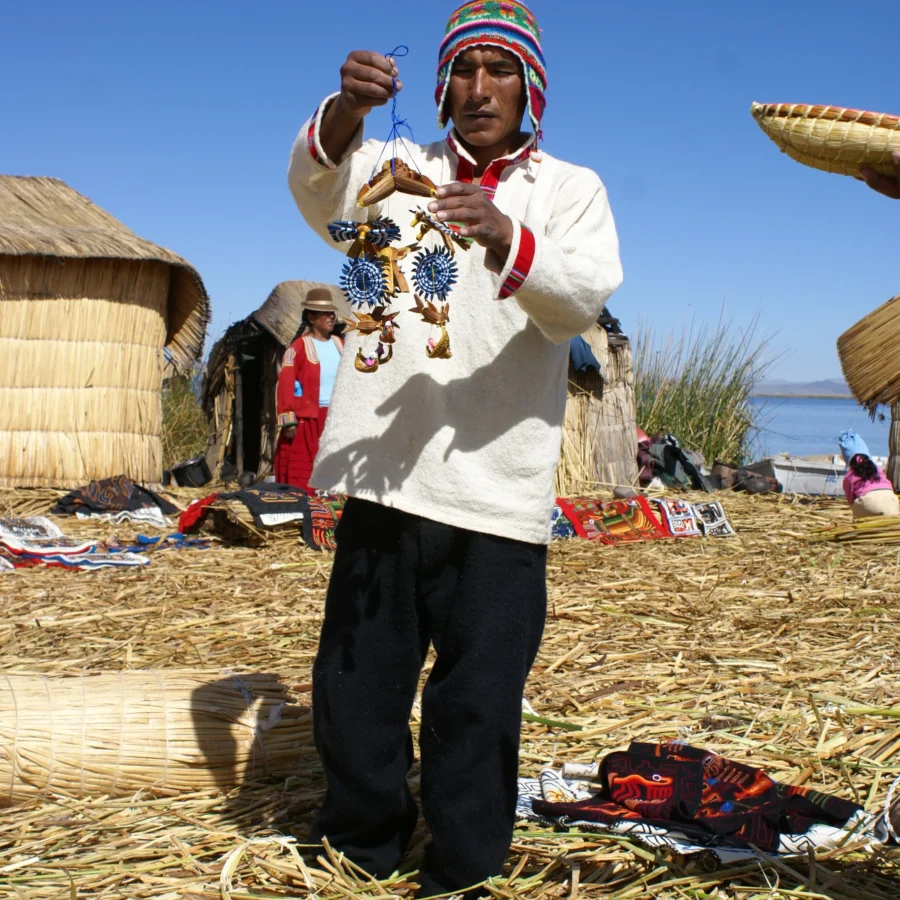
The floating houses of the settlers were made of totora, a fundamental plant that grows in Lake Titicaca, being raw material for the construction of their homes, transportation, commerce and even food.
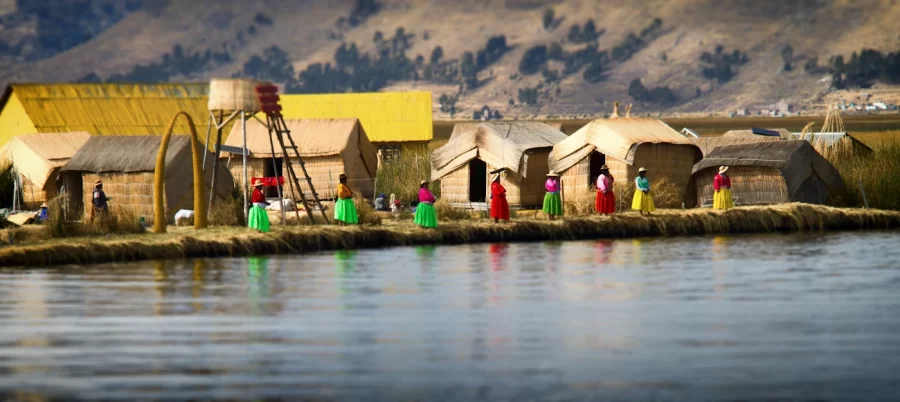
Elaboration process
The totora is an aquatic plant that measures three meters, these are abundant in wetlands such as Lake Titicaca; for the inhabitants of the Uros this material allows them to make the constructions and buildings of their houses or boats.
The process of building the floating houses is done by successive layers of totora reeds in blocks of roots and then branches, but first at the base are placed stakes and logs on which they will be moored. These islands float normally, since the material emits gases once it is under water, a process that only the totora reeds produce.
As the totora is made by big masses, it allows it to support fixed loads as its houses and also its inhabitants on the surface that they are, in any case they always stay dry, since they have great support of the water.
These floating islands can stay on the surface of the water for about 23 years and every six months they do a restoration in which they move their houses and put another layer to improve and prevent damage.
In the beginning the Uros people were considered illiterate, after a few years they founded the first primary school in Uros, this act was made by the "Adventist Mission of Lake Titicaca".
Currently, there are other schools, but only with the primary level, a situation that worries because once the children have completed primary school they have to leave the island to continue with high school and college, the means of transport used by children to attend their schools are in their boats.
Some children leave the island to seek a better future, either through education or by working to improve their economic stability. But now, with the active tourism that Puno has, many are able to have a better quality of life and continue with their plans for the future.
The Caballitos de Totora were made of the same raw material as the houses, according to history, the ancestors did not live on the surface of the islands, but what they did was to build large reed rafts called "Caballitos de Totora".
These were considered as houses, since inside they could cook, live and sleep normally, which is why the inhabitants nowadays built houses, boats as a means of transportation and even became touristic.
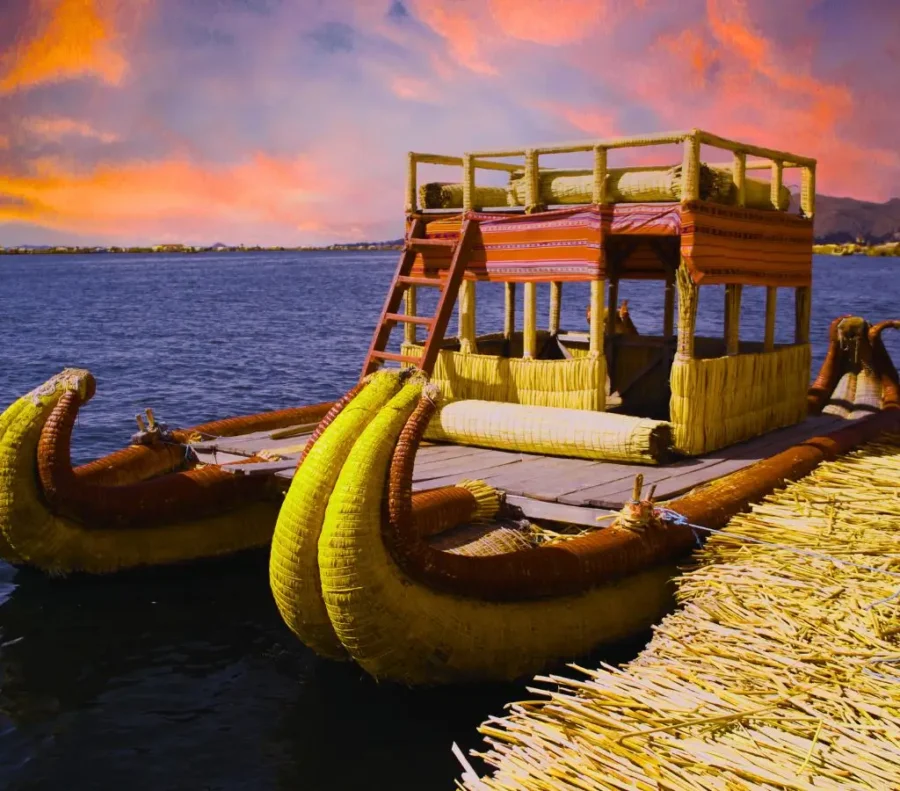
The only means of transportation used on the floating island of the Uros is by lake, they are modern motorboats that will move you around the lake; you can also see boats used by the inhabitants of the island.
Fishing is their main livelihood, the poultry house, these will be the basis of their meals; however, to get the other food they have to exchange the fish for potatoes, coca or salt and so on, since they have no solid land to cultivate, so they will barter or sell in exchange for other inputs.
Among the species they hunt are trout, silverside and carachi, the dishes they make are fried trout, trout ceviche, trout timpu, among other typical local dishes.
